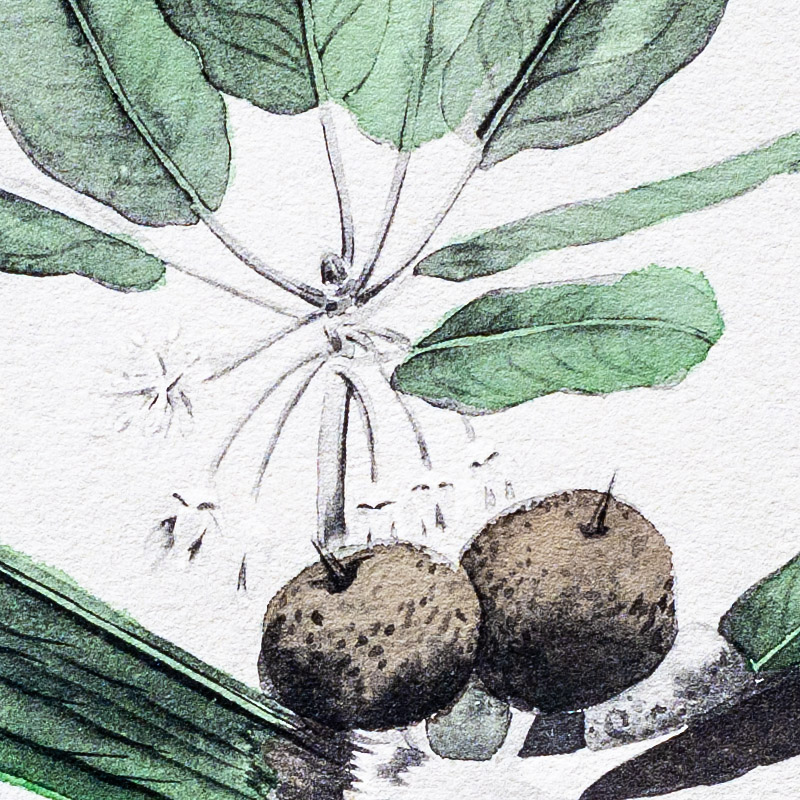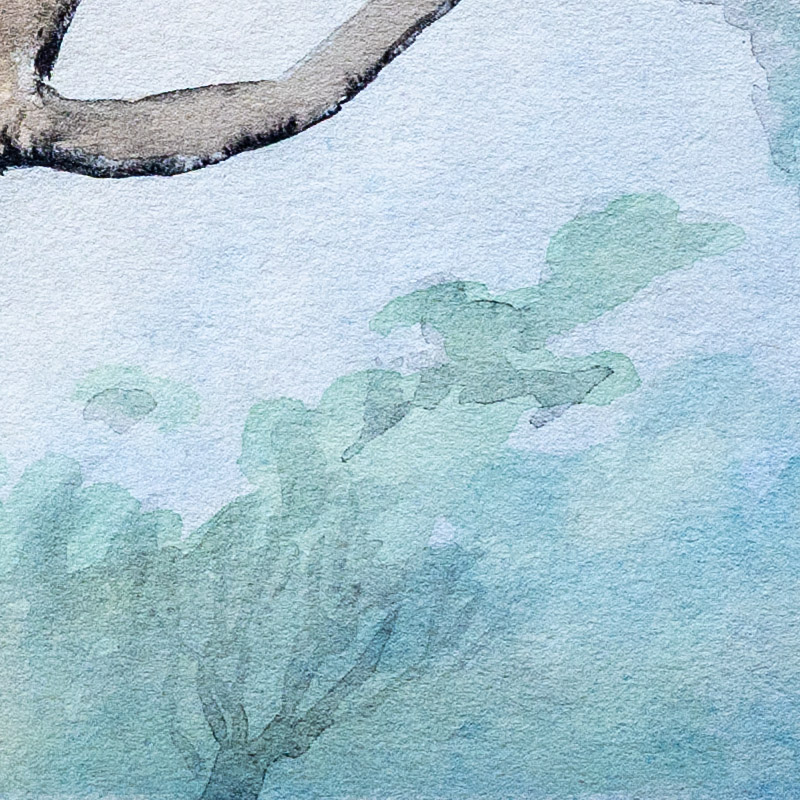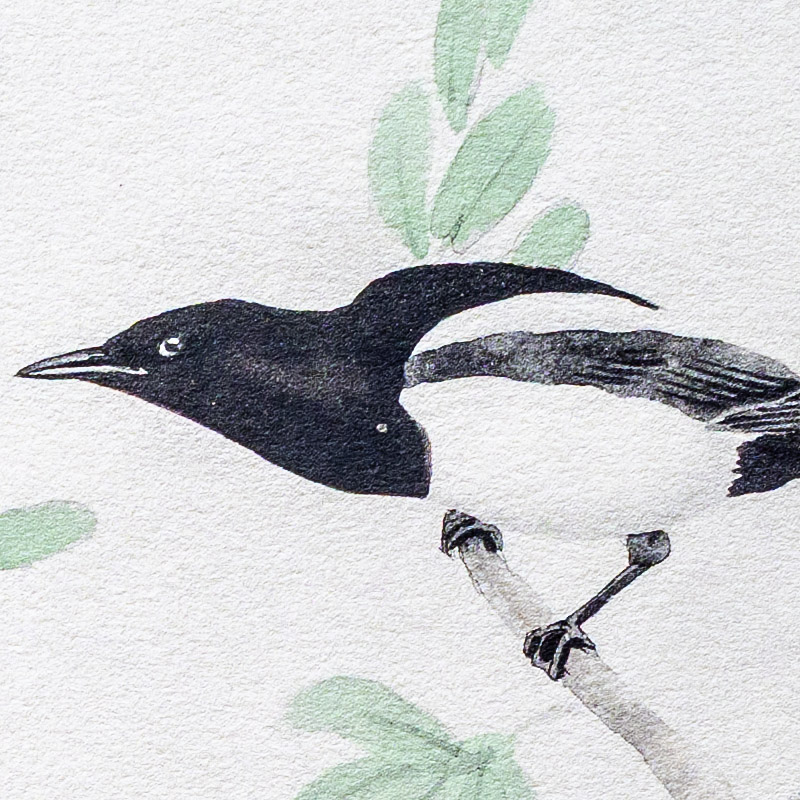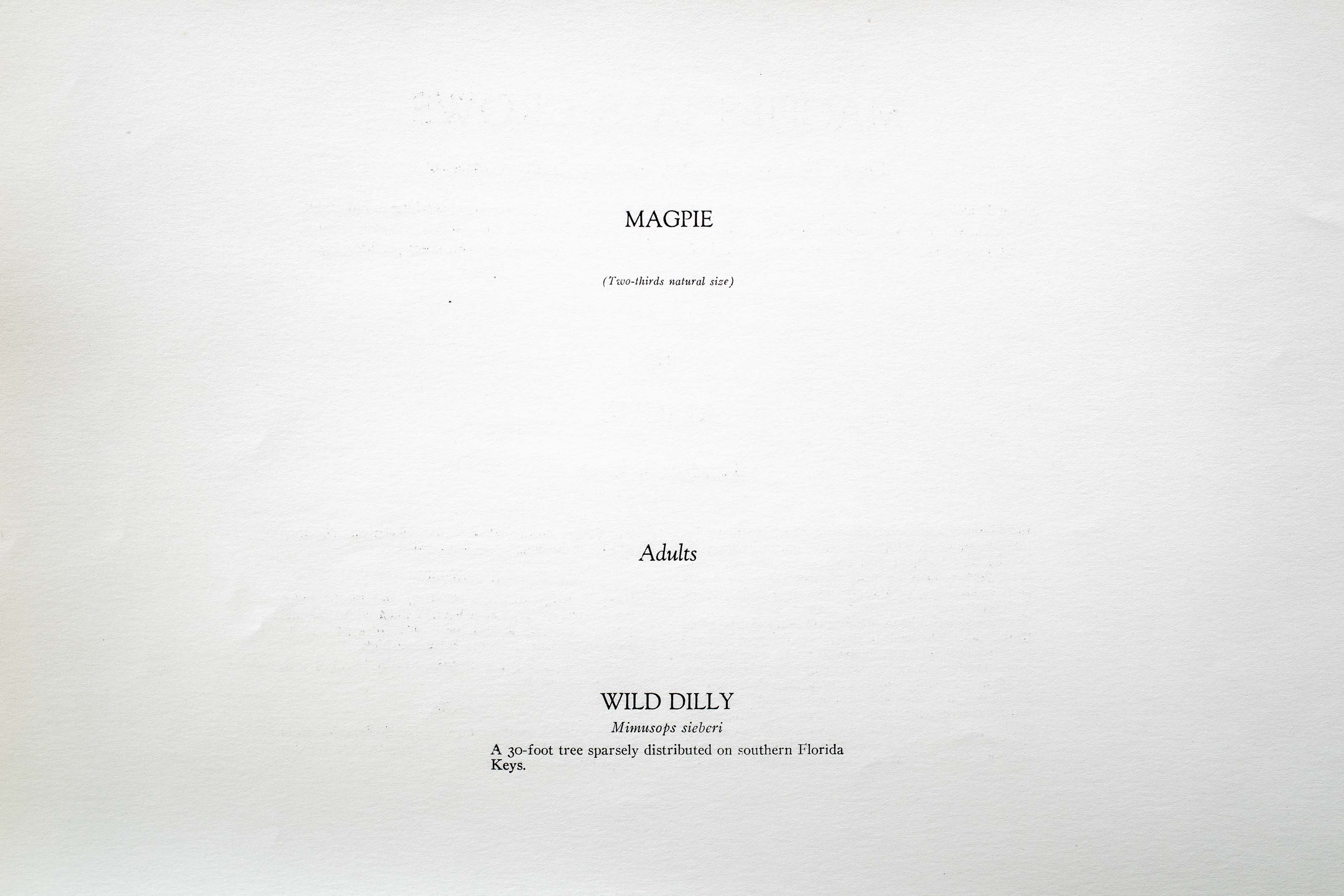






1915
1931
8
475
A team of dedicated board members, volunteers, and student interns has published every page in Volume 9. This volume includes 360 images of paintings and lyrical descriptions of birds, now available online for everyone to enjoy anywhere in the world. This is a monumental task. Each volume requires approximately 400 hours to photograph, edit, transcribe, catalog, and publish online. We need your support to complete this work.
If you're tech-savvy, have a good eye, are meticulous with details, and love structured data, please consider volunteering by emailing us at hello@rexbrasher.org.
We encourage all bird lovers and supporters to consider a monetary donation to support our mission to make Rex's work available for everyone. You can provide a one-time or recurring donation online.
Combining Crow cleverness with Blue Jay loquacity, these brigands in white and black uniforms keep the locality they frequent in a state of excitement. Animals, chickens or other birds are sent scurrying to cover by sudden dives of MAGPIES who voice their derision with loud cries.
They are expert thieves, stealing anything which strikes their fancy. The habit of devouring young chicks and eggs has brot shotguns to shoulder whenever they appear. Caution, protected nests and large families outweigh man's enmity and they are holding their own.
If taken young they can be taught words and short tunes but seem more interested in strange visitors than in the one who feeds them. Clothes make the man in their estimation and a well-dressed individual gets all their attention. They gather in sentineled flocks except during nesting season and subsist on any food which can be obtained — even carrion.
NEST: a bulky structure of sticks and thorny twigs (sometimes as large as a barrel) lined with mud and grass. Entirely arched, with side entrance and located in trees from five to forty feet high.
EGGS: 6–9; pale green or gray, heavily blotched with brown and purple.
Thinly-wooded parts of western North America from northwestern Alaska to southern Arizona, New Mexico and western Texas.
A 30-foot tree sparsely distributed on southern Florida Keys.